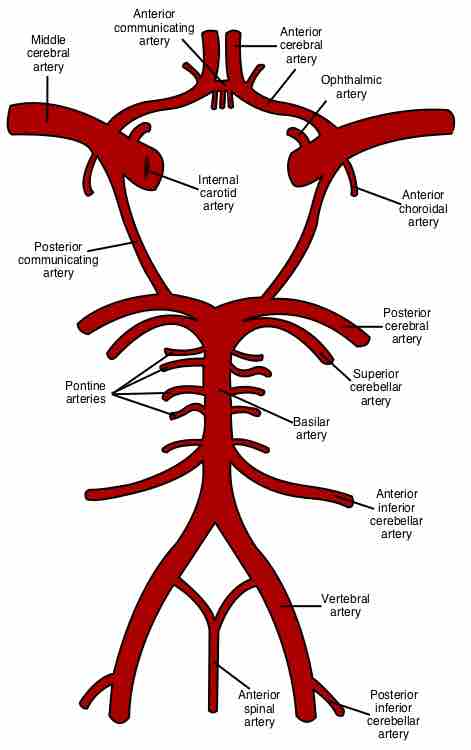Cerebral circulation refers to the movement of blood through the network of blood vessels supplying the brain. The arteries deliver oxygenated blood, glucose, and other nutrients to the brain and the veins carry deoxygenated blood back to the heart, removing carbon dioxide, lactic acid, and other metabolic products. Since the brain is very vulnerable to compromises in its blood supply, the cerebral circulatory system has many safeguards. The circle of Willis, a circulatory anastomosis that supplies blood to the brain and surrounding structures while providing redundancy in case of any interruption, is a key protection. Failure of these safeguards results in cerebrovascular accidents, commonly known as strokes.
The amount of blood that the cerebral circulation carries is known as cerebral blood flow (CBF). In an adult, CBF is typically 750 milliters per minute or 15% of the cardiac output. CBF is tightly regulated to meet the brain's metabolic demands. Too much blood can raise intracranial pressure (ICP), which can compress and damage delicate brain tissue. Too little blood flow (ischemia) results in tissue death. In brain tissue, a biochemical cascade known as the ischemic cascade is triggered when the tissue becomes ischemic, potentially resulting in damage to and death of brain cells. Medical professionals must take steps to maintain proper CBF in patients who have conditions like shock, stroke, and traumatic brain injury.

Brain Blood Flow
Schematic representation of the circle of Willis, arteries of the brain, and brain stem.